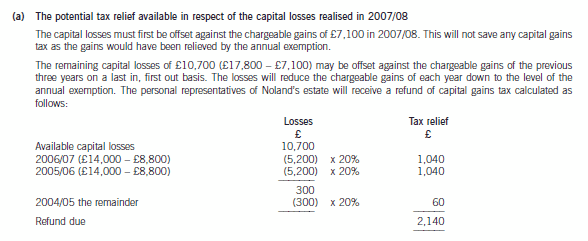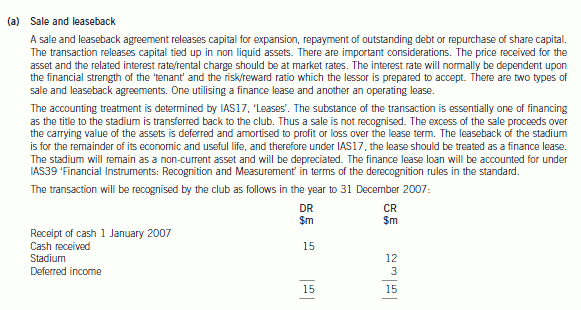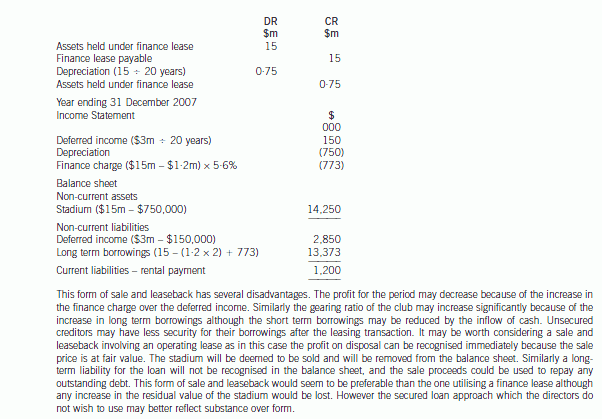吉林省考生想知道ACCA的科目F2怎么备考?
发布时间:2020-01-10
学习ACCA,不仅是为了给自己的简历上增添一个拿的出手的证书,更是因为ACCA完整的知识体系,充实自己的大学生活。我认为,每一份努力都会有回报,只要功夫下的多,就没有什么事情做不好。这一份ACCA MA(F2)的备考技巧请大家收藏起来哦~
报考建议
F2的考试一般建议大家在结课之后一个月左右考试,因为F2是一门刷题型的科目,需要留出足够的做题,并且考前也需要模拟考进行练习;但也不宜太晚考,有些需要记忆的知识点容易遗忘。因此,F2最简单也是最直截了当的复习技巧就是题海战术,当然大家可以根据自己的实际情况进行调整,如果备考时间充裕,也可以缩短备考时间,如果碰上了学校的考试周,或者有自己的比较忙的事情,也可以适当拉长。
备考建议
① 备考初期:F2主要以刷题为主。F2是管理会计,偏计算,但是计算水平要求其实也很低,重要的是细心点,把题看懂。
在ACCA的官网中也有样卷与模考卷可以练习,其中样卷是可以免费进入,进行练习的,模考卷的练习是需要付7英镑的费用。:
② 临考准备:如果大家已经看完网课,也做了一定量的习题了后,这个时候应该要明确自己薄弱的地方在哪里。哪部分知识点比较薄弱,就花费多一点的时间去复习,反之就少花费一点时间。建议大家可以像考试一样,在电脑上认真地花两个小时做一套模拟卷,并且进行批改,看看自己在考试中会遇到什么问题。
如果觉得两个小时的时间不够,做不完,说明做题的速度不够,需要提高做题速度。那么再做一遍题库,或者找其他的练习册再进行题海战略是必要的。
如果发现某个知识点的题目都需要花特别多的时间,或错误率非常高,那么说明对这部分的知识掌握的并不是很好,需要再次反复去巩固这部分的知识点,这部分有关的网课以及习题是需要再重新回顾1-2遍的。
如果觉得用电脑看题自己非常不适应,会非常影响自己的思路和速度,那么平时就不要在纸质的练习册上做题了,应该多练练,比如可以在电脑上做电子版的练习册或题库,使自己更适应机考。
总之大家可以通过模拟考的形式明确自己的弱点,进行加强后再在考试前练习一次,这样考试前就不会太紧张。但考试紧张也是会在所难的,所以就要要求大家及时调整心态,快速找回考试状态。
F2知识点总结
1. Data
and information:
Unprocessed
--->data; Processed --->information
2.
Quality of good information
“ACCURATE”
3.
Mission statement(abstract) ---> Objective(SMART) --->Strategy(Possible
course of action)
4.
Planning (establishing the objectives& selecting appropriate strategies)
5.
Control(compare plans with actual results, reviewed and made changes)
6. The
relationship between planning, decision making and control
7.
Management information Strategic information
幻想一步成功者突遭失败,会觉得浪费了时间,付出了精力,却认为没有任何收获;在失败面前,懦弱者痛苦迷茫,彷徨畏缩;而强者却坚持不懈,紧追不舍。各位ACCAer们加油,期待听到你们3月份考试成功的好消息~
下面小编为大家准备了 ACCA考试 的相关考题,供大家学习参考。
(b) Using relevant evaluation criteria, assess how achievable and compatible these three strategic goals are over
the next five years. (20 marks)
(b) The three strategic goals are to become the leading premium ice cream brand in the UK; to increase sales to £25 million;
and to achieve a significant entry into the supermarket sector. On the basis of performance to date these goals will certainly
be stretching. All three strategies will involve significant growth in the company. Johnson and Scholes list three success criteria
against which the strategies can be assessed, namely suitability, acceptability and feasibility. Suitability is a test of whether a
strategy addresses the situation in which a company is operating. In Johnson and Scholes’ terms it is the firm’s ‘strategic
position’, an understanding of which comes from the analysis done in the answer to the question above. Acceptability is
concerned with the likely performance outcomes of the strategy and in particular whether the return and risk are in line with
the expectations of the stakeholders. Feasibility is the extent to which the strategy can be made to work and is determined
by the strategic capability of the company reflecting the resources available to implement the strategy. It is interesting to see
that the three growth related goals are compatible in that becoming the leading premium brand will involve increased market
penetration, product development and market development. If achieved it will increase sales and necessitate a successful
entry into the supermarket sector. Time will be an important influence on the success or otherwise of these growth goals –
five years seems to be a reasonable length of time to achieve these ambitious targets.
Suitability – Churchill is currently a small but significant player at the premium end of the market. This segment is becoming
more significant and is attractive because of the high prices and high margins attainable. This is leading to more intense
competition with global companies. One immediate question that springs to mind is what precisely does ‘leading brand’
mean? The most obvious test is that of market share and unless Churchill achieve the access to the supermarkets looked for
in the third strategic goal, seems difficult to achieve. If ‘leading brand’ implies brand recognition this again looks very
ambitious. On the positive side this segment of the ice cream market is showing significant growth and Churchill’s success
in gaining sponsorship rights to major sporting events is a step in the right direction. The combination of high price and high
quality should position the company where it wants to be. Achieving sales of £25 million represents a quantum shift in
performance in a company that has to date only achieved modest levels of sales growth.
Acceptability – as a family owned business the balance between risk and return is an important one. The family to date has
been ‘happy’ with a modest rate of growth and modest return in terms of profits. The other significant stakeholder group is
the professional managers headed up by Richard Smith. They seem much more growth orientated and may be happier with
the risks that the growth strategy entails. The family members seem more interested in the manufacturing side than the
retailing side of the business and their bad previous experiences with growing the business through international market
development may mean they are risk averse and less willing to invest the necessary resources.
Feasibility – again this is linked to how ‘leading brand’ is defined. If as seems likely the brand becomes more widely known
through increasing the number of company owned ice cream stores then a significant investment in retail outlets will be
necessary. Increasing the number of franchised outlets will reduce the financial resources required but may be at the expense
of the brand’s reputation. Certainly there would seem to be a need for increased levels of advertising and promotion –
particularly to gain access to the ice cream cabinets in the supermarket chains. This is likely to mean an increase in the
number of sales and marketing staff. Equally important will be the ability to develop and launch new products in a luxury
market shaped by impulse buying and customers looking to indulge themselves.
Overall, becoming the leading brand of premium ice cream may well be the key to achieving the desired presence in the
supermarket ice cream cabinets, which in turn is a pre-requisite for increasing company sales to £25 million. So the three
strategic goals may be regarded as consistent and compatible with one another. However each strategic goal will have to be
broken down into its key elements. For example in achieving sales of £25 million what proportion of sales will come from its
own ice cream stores and what proportion from other outlets including the supermarkets? Sales to date of Churchill ice cream
are dominated by impulse purchases but in achieving sales of £25 million penetrating the take home market will be essential.
Finally, what proportion of these take home sales will be under the supermarkets own label brands? Over reliance on own
label sales will seriously weaken Churchill’s desire to become the leading national brand of premium ice cream. It looks to
be an ambitious but attainable strategy but will require a significant planning effort to develop the necessary resources andcapabilities vital to successful implementation of the strategy.
5 Crusoe has contacted you following the death of his father, Noland. Crusoe has inherited the whole of his father’s
estate and is seeking advice on his father’s capital gains tax position and the payment of inheritance tax following his
death.
The following information has been extracted from client files and from telephone conversations with Crusoe.
Noland – personal information:
– Divorcee whose only other relatives are his sister, Avril, and two grandchildren.
– Died suddenly on 1 October 2007 without having made a will.
– Under the laws of intestacy, the whole of his estate passes to Crusoe.
Noland – income tax and capital gains tax:
– Has been a basic rate taxpayer since the tax year 2000/01.
– Sales of quoted shares resulted in:
– Chargeable gains of £7,100 and allowable losses of £17,800 in the tax year 2007/08.
– Chargeable gains of approximately £14,000 each tax year from 2000/01 to 2006/07.
– None of the shares were held for long enough to qualify for taper relief.
Noland – gifts made during lifetime:
– On 1 December 1999 Noland gave his house to Crusoe.
– Crusoe has allowed Noland to continue living in the house and has charged him rent of £120 per month
since 1 December 1999. The market rent for the house would be £740 per month.
– The house was worth £240,000 at the time of the gift and £310,000 on 1 October 2007.
– On 1 November 2004 Noland transferred quoted shares worth £232,000 to a discretionary trust for the benefit
of his grandchildren.
Noland – probate values of assets held at death: £
– Portfolio of quoted shares 370,000
Shares in Kurb Ltd 38,400
Chattels and cash 22,300
Domestic liabilities including income tax payable (1,900)
– It should be assumed that these values will not change for the foreseeable future.
Kurb Ltd:
– Unquoted trading company
– Noland purchased the shares on 1 December 2005.
Crusoe:
– Long-standing personal tax client of your firm.
– Married with two young children.
– Successful investment banker with very high net worth.
– Intends to gift the portfolio of quoted shares inherited from Noland to his aunt, Avril, who has very little personal
wealth.
Required:
(a) Prepare explanatory notes together with relevant supporting calculations in order to quantify the tax relief
potentially available in respect of Noland’s capital losses realised in 2007/08. (4 marks)

(ii) The percentage change in revenue, total costs and net assets during the year ended 31 May 2008 that
would have been required in order to have achieved a target ROI of 20% by the Beetown centre. Your
answer should consider each of these three variables in isolation. State any assumptions that you make.
(6 marks)
(ii) The ROI of Beetown is currently 13·96%. In order to obtain an ROI of 20%, operating profit would need to increase to
(20% x $3,160,000) = $632,000, based on the current level of net assets. Three alternative ways in which a target
ROI of 20% could be achieved for the Beetown centre are as follows:
(1) Attempts could be made to increase revenue by attracting more clients while keeping invested capital and operating
profit per $ of revenue constant. Revenue would have to increase to $2,361,644, assuming that the current level
of profitability is maintained and fixed costs remain unchanged. The current rate of contribution to revenue is
$2,100,000 – $567,000 = $1,533,000/$2,100,000 = 73%. Operating profit needs to increase by $191,000
in order to achieve an ROI of 20%. Therefore, revenue needs to increase by $191,000/0·73 = $261,644 =
12·46%.
(2) Attempts could be made to decrease the level of operating costs by, for example, increasing the efficiency of
maintenance operations. This would have the effect of increasing operating profit per $ of revenue. This would
require that revenue and invested capital were kept constant. Total operating costs would need to fall by $191,000
in order to obtain an ROI of 20%. This represents a percentage decrease of 191,000/1,659,000 = 11·5%. If fixed
costs were truly fixed, then variable costs would need to fall to a level of $376,000, which represents a decrease
of 33·7%.
(3) Attempts could be made to decrease the net asset base of HFG by, for example, reducing debtor balances and/or
increasing creditor balances, while keeping turnover and operating profit per $ of revenue constant. Net assets
would need to fall to a level of ($441,000/0·2) = $2,205,000, which represents a percentage decrease
amounting to $3,160,000 – $2,205,000 = 955,000/3,160,000 = 30·2%.
3 Seejoy is a famous football club but has significant cash flow problems. The directors and shareholders wish to take
steps to improve the club’s financial position. The following proposals had been drafted in an attempt to improve the
cash flow of the club. However, the directors need advice upon their implications.
(a) Sale and leaseback of football stadium (excluding the land element)
The football stadium is currently accounted for using the cost model in IAS16, ‘Property, Plant, and Equipment’.
The carrying value of the stadium will be $12 million at 31 December 2006. The stadium will have a remaining
life of 20 years at 31 December 2006, and the club uses straight line depreciation. It is proposed to sell the
stadium to a third party institution on 1 January 2007 and lease it back under a 20 year finance lease. The sale
price and fair value are $15 million which is the present value of the minimum lease payments. The agreement
transfers the title of the stadium back to the football club at the end of the lease at nil cost. The rental is
$1·2 million per annum in advance commencing on 1 January 2007. The directors do not wish to treat this
transaction as the raising of a secured loan. The implicit interest rate on the finance in the lease is 5·6%.
(9 marks)
Required:
Discuss how the above proposals would be dealt with in the financial statements of Seejoy for the year ending
31 December 2007, setting out their accounting treatment and appropriateness in helping the football club’s
cash flow problems.
(Candidates do not need knowledge of the football finance sector to answer this question.)


声明:本文内容由互联网用户自发贡献自行上传,本网站不拥有所有权,未作人工编辑处理,也不承担相关法律责任。如果您发现有涉嫌版权的内容,欢迎发送邮件至:contact@51tk.com 进行举报,并提供相关证据,工作人员会在5个工作日内联系你,一经查实,本站将立刻删除涉嫌侵权内容。
- 2020-03-07
- 2020-01-10
- 2020-01-10
- 2020-01-09
- 2020-01-10
- 2020-03-27
- 2020-01-10
- 2020-03-07
- 2020-01-10
- 2020-01-10
- 2020-01-10
- 2020-01-07
- 2020-01-10
- 2021-02-14
- 2020-09-03
- 2020-02-14
- 2020-01-10
- 2020-03-21
- 2020-01-10
- 2020-01-10
- 2020-02-25
- 2020-01-04
- 2020-04-23
- 2020-01-10
- 2020-01-10
- 2020-01-10
- 2020-03-25
- 2020-01-10
- 2020-03-01
- 2020-01-09